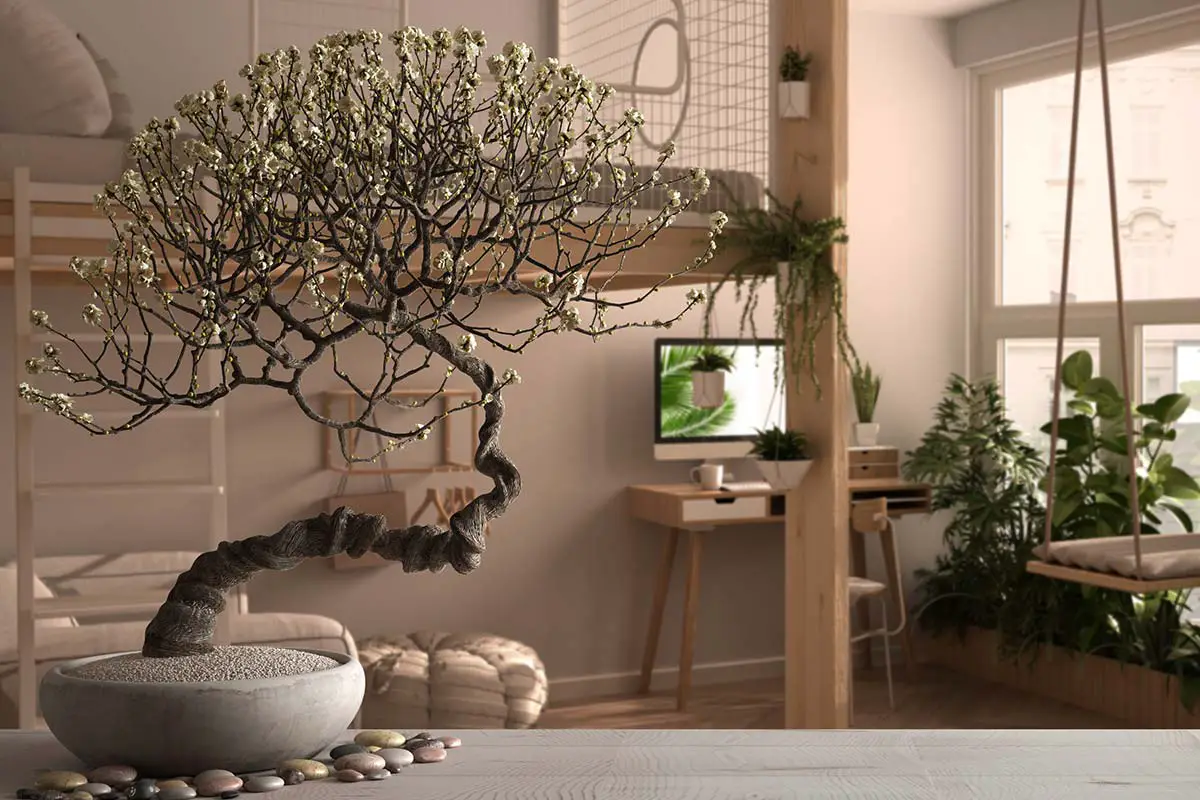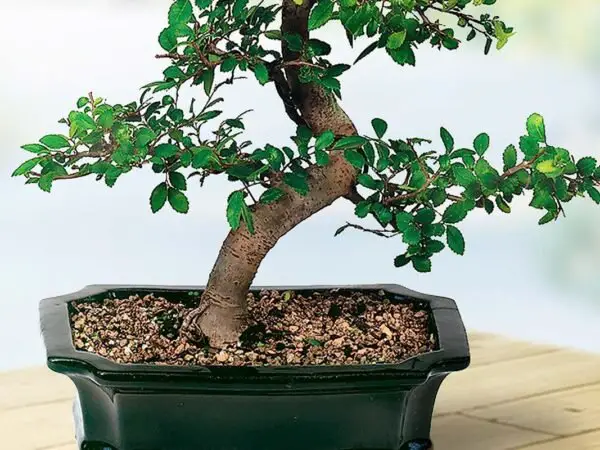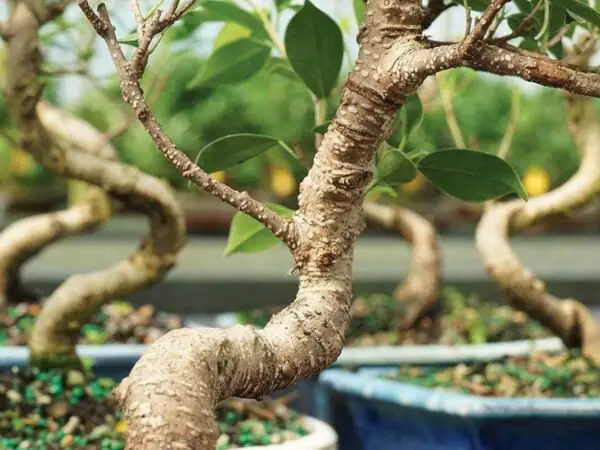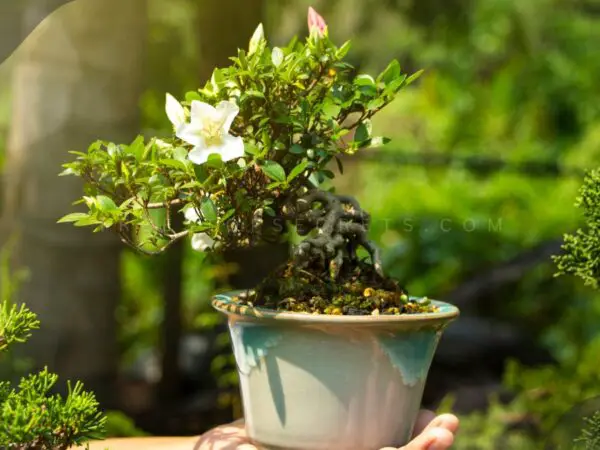Caring for a bonsai tree indoors requires a unique set of skills and knowledge. Unlike outdoor bonsai trees, indoor bonsai have different needs due to their environment. By understanding these requirements, you can help your bonsai thrive indoors.
Understanding Indoor Bonsai Tree Care
Indoor bonsai tree care involves maintaining a bonsai's health and growth inside a home or office setting. This care includes proper watering, lighting, humidity control, and pruning techniques specific to an indoor environment.
Bonsai trees, miniature versions of their full-sized counterparts, require meticulous attention to detail. Indoor bonsai care is different from outdoor care because the indoor environment lacks natural elements such as rain and wind, which are crucial for a bonsai's growth.
Examples:
- Watering: Indoor bonsai need a specific watering schedule as they don’t benefit from natural rainfall. For instance, ficus bonsai require regular watering to keep the soil slightly moist but not waterlogged.
- Lighting: Adequate light is vital for photosynthesis. Placing your bonsai near a south-facing window or using grow lights can provide the necessary light spectrum.
- Humidity: The lack of natural humidity indoors can be a challenge. Using a humidity tray or misting the leaves regularly can help maintain the required moisture level.
Tips for Indoor Bonsai Care:
- Use a Humidity Tray: This can help provide the moisture your bonsai needs.
- Invest in a Grow Light: Especially useful during winter months when natural light is limited.
- Rotate Your Bonsai: Ensures even exposure to light and prevents uneven growth.
- Regular Pruning: Helps maintain the shape and encourages healthy growth.
- Monitor Soil Moisture: Use a soil moisture meter to avoid over or under-watering.
Table: Common Indoor Bonsai Trees and Their Specific Care Needs
| Bonsai Tree Type | Light Requirements | Watering Frequency | Humidity Needs | Special Tips |
|---|---|---|---|---|
| Ficus | Bright, indirect sunlight | Moderate, keep soil slightly moist | High, mist regularly | Rotate weekly for even growth |
| Jade | Bright, direct sunlight | Low, allow soil to dry between watering | Moderate | Prune regularly to maintain shape |
| Chinese Elm | Bright, indirect sunlight | Moderate, keep soil moist | Moderate to high | Use a humidity tray in dry climates |
| Serissa | Bright, indirect sunlight | High, keep soil consistently moist | High | Avoid cold drafts and sudden temperature changes |
Choosing the Right Tree
Selecting the appropriate bonsai tree is crucial for success. As a beginner, I find that certain species are more forgiving and easier to care for than others. Here are a few popular options:
| Tree Type | Description |
|---|---|
| Ficus (Ficus retusa) | Resilient with beautiful leaves; thrives in high humidity and needs lots of light. Requires watering before the soil dries out completely. (Bonsai Empire) |
| Dwarf Jade (Portulacaria afra) | A succulent that can withstand drought; needs plenty of direct sunlight and can be placed in front of a sunny window. (Bonsai Empire) |
| Fukien Tea (Carmona) | Sensitive to conditions; requires lots of light and frequent watering. (Bonsai Empire) |
| Hawaiian Umbrella (Schefflera) | Needs bright light and regular watering; slightly more sensitive. (Bonsai Empire) |
| Sweet Plum (Sageretia) | A bit more sensitive, requiring lots of light and consistent watering. (Bonsai Empire) |
Tropical and subtropical varieties are more suited for indoor growth, as they can adapt to the right conditions. However, I must ensure they receive adequate light to avoid leaf loss and susceptibility to pests (Bonsai Resource Center).
Ideal Indoor Conditions
Creating the perfect environment for my bonsai tree is just as important as choosing the right species. Most bonsai trees need direct sunlight and should be positioned near a window. Here are some key points to consider:
- Light Requirements: Bonsai species typically thrive with a few hours of direct sunlight each day. A lack of light can lead to problems like leaf drop and increased pest susceptibility (Bonsai Empire).
- Temperature: Maintaining a stable temperature is essential. Indoor bonsai trees prefer temperatures that mimic their natural habitats, often between 60°F to 75°F (15°C to 24°C).
- Humidity: Many bonsai trees benefit from higher humidity levels. If the air in my home is dry, especially in winter, I might need to mist the leaves or use a humidity tray filled with water and pebbles.
By ensuring I provide the right tree and optimal indoor conditions, I can foster a healthy environment for my bonsai tree to flourish.
Watering Techniques
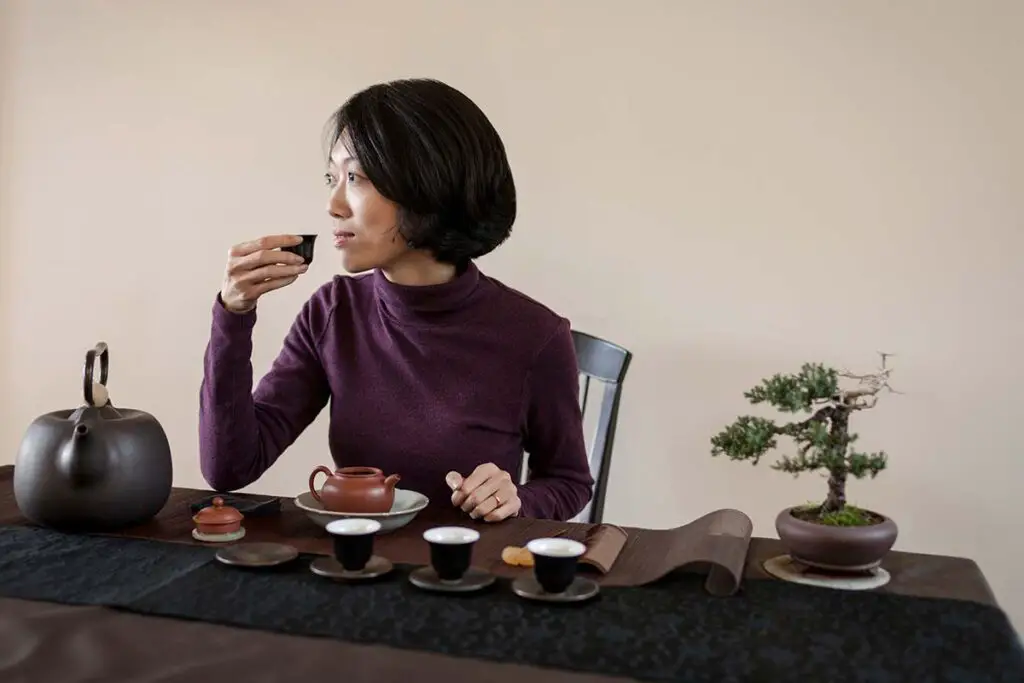
Proper hydration is essential for the health and strength of a bonsai tree. I pay close attention to the watering techniques to ensure my bonsai thrives. Finding the right balance in watering is crucial to avoid issues like overwatering or underwatering.
How Often to Water
The frequency of watering my bonsai tree varies by season and species. Here’s a general guideline to help understand when to water:
| Season | Watering Frequency |
|---|---|
| Winter | Once a week or less |
| Spring | Every 2 to 3 days |
| Summer | Every day or every other day |
| Fall | Every 3 to 5 days |
Different bonsai tree species have varying water requirements. Deciduous trees prefer wetter soil than conifers, while tropical species generally require less watering (Bonsaiable). I always check the specific needs of the species I have to tailor my watering routine.
Environmental factors such as wind, sun, and rain can also affect the watering needs of my bonsai. Wind speed, sunshine, and heat can increase water requirements, while rain can lead to overwatering in wet climates (Bonsaiable).
Signs of Over/Underwatering
Recognizing the signs of overwatering or underwatering is key to maintaining my bonsai’s health. Here are some indicators to watch for:
| Condition | Signs of Overwatering | Signs of Underwatering |
|---|---|---|
| Leaves | Yellowing or wilting | Crispy, dry, or browning edges |
| Soil | Constantly wet, soggy, or muddy | Dry and hard soil |
| Roots | Root rot, mushy roots | Stunted growth, brown, or shriveled roots |
Moss can serve as a helpful indicator for watering bonsai trees. The presence of moisture in the moss indicates sufficient water in the system, signaling when it's time to water the bonsai (Bonsaiable). Monitoring the moss helps me effectively manage the soil system and keep my bonsai healthy.
Pruning and Styling
Pruning and styling are essential aspects of caring for a bonsai tree indoors. They help maintain the tree's shape and promote healthy growth. Understanding the different types of pruning techniques will enhance the beauty and vitality of my bonsai.
Maintenance Pruning
Maintenance pruning is crucial for refining the shape of a bonsai tree and encouraging growth closer to the inner parts of the tree. This type of pruning involves trimming branches and shoots that have outgrown the intended canopy shape. For most trees, it is recommended to perform maintenance pruning two to four times a year. One of the advantages of indoor bonsai is that it can be pruned year-round, allowing for flexibility in care (Bonsai Empire).
| Pruning Frequency | Recommended Times |
|---|---|
| 2-4 times a year | Varies by species |
| Year-round | Indoor bonsai |
Structural Pruning Techniques
Structural pruning involves shaping the bonsai by pruning larger branches. This technique gives the tree its basic form and is best performed in early spring or late autumn, just before or after the growing season. The timing for this can vary between species. To minimize scarring from cuts, I use concave cutters and apply cut paste to protect the wounds from infections (Bonsai Empire).
A healthy bonsai tree can withstand the pruning of up to one-third of its foliage. It is important to allow the tree to fully recover from structural pruning before proceeding with repotting or root cutting. Typically, I wait until the next spring after styling to ensure my bonsai is ready for additional care.
| Structural Pruning | Best Timing |
|---|---|
| Basic shaping | Early spring or late autumn |
| Recovery time | Until next spring |
By incorporating maintenance and structural pruning techniques into my bonsai care routine, I promote a healthy and aesthetically pleasing tree.
Soil and Fertilization
When caring for a bonsai tree indoors, selecting the right soil mix and establishing a fertilizing schedule is crucial for promoting healthy growth and vitality.
Best Soil Mixes
The type of soil mix I choose for my bonsai tree can significantly impact its health. For seedlings, cuttings, or trees in the earlier stages of development, the specific soil mix is not as critical since it will likely be changed multiple times before reaching the bonsai pot stage. A combination of straight perlite or perlite mixed with peat moss, coir, or other organic materials works wonderfully for rooting cuttings or sprouting seeds.
For more established trees, I prefer using a mix of pumice, especially for trees collected from gardens or mountains. This mix allows for better moisture control depending on the particle size:
| Soil Type | Characteristics |
|---|---|
| 100% Pumice | Lightweight, moisture control, ideal for garden trees |
| 30% – 50% Akadama | Adjusts moisture retention based on tree's needs |
| 100% Kanuma | Recommended for azalea bonsai, easy maintenance |
Tropical bonsai thrive in a variety of mixes, with many benefiting from a 30% to 50% akadama mix, which can be adjusted based on moisture needs. Azaleas, particularly satsuki azaleas, are best planted in a simple 100% kanuma mix for cuttings, young trees, and refined specimens (Bonsai Tonight).
Fertilizing Schedule
Fertilizing bonsai trees is essential for their overall health. I typically fertilize my bonsai once or twice a month using specially formulated bonsai fertilizer or houseplant fertilizer at half the recommended strength. It is important to avoid fertilizing weak or freshly repotted trees, as they require time to acclimate without added nutrients. Over-fertilization can harm the roots and overall health of the tree.
| Fertilization Frequency | Recommended Fertilizer Strength |
|---|---|
| Once or Twice a Month | Half of suggested strength |
| Avoid During Weakness | Do not fertilize freshly repotted trees |
With the right soil mix and a proper fertilization schedule, I can create an optimal environment for my bonsai tree to thrive indoors.
Light Requirements
Importance of Direct Sunlight
When caring for a bonsai tree indoors, understanding its light requirements is crucial. The majority of bonsai species thrive on direct sunlight and require outdoor temperature changes to flourish. However, tropical or subtropical varieties are more suitable for indoor environments if provided with the right conditions. According to Bonsai Resource Center, these specific types of bonsai can adapt well to indoor habitats.
A lack of adequate light can pose serious risks to the health of my bonsai. If the tree is placed too far from a window or during the winter months when sunlight is limited, it may lose an unusually large number of leaves and become more vulnerable to pests (Bonsai Empire). Ensuring that my bonsai receives sufficient light is essential for maintaining its vitality.
Using Grow Lights
In cases where natural light is inadequate, especially during the darker months from the autumnal equinox to the spring equinox, using grow lights can be an effective solution. These lights can supplement or even replace natural daylight, helping my indoor bonsai thrive in less than optimal lighting conditions. It is vital to balance the costs and benefits when incorporating artificial lighting into my care routine (Bonsai Empire).
For optimal growth, it is recommended to provide a total of 12-15 hours of light daily, combining both natural and supplementary light. The exact duration and timing may vary depending on factors such as room temperature and the specific species of the bonsai. If my bonsai is located more than half a meter away from a large south or west-facing window, using continuous grow lights for 12-15 hours a day is advisable (Bonsai Empire). This practice can significantly enhance the health and vitality of my indoor bonsai, ensuring it continues to thrive.
Pest Management
Taking care of a bonsai tree indoors requires vigilance against pests that can harm its health. Understanding common pests and implementing preventative measures is essential for maintaining a thriving bonsai.
Common Pests
Bonsai trees can be susceptible to several types of pests. Here are some of the most common ones to watch for:
| Pest | Description |
|---|---|
| Aphids | Small, soft-bodied insects that suck sap from leaves, causing yellowing and curling. |
| Spider Mites | Tiny pests that create webbing on leaves and cause stippling and discoloration. |
| Scale Insects | Small, immobile insects that attach to stems and leaves, leading to yellowing and wilting. |
| Whiteflies | Small, white flying insects that also suck sap and can cause leaf drop. |
Preventative Measures
To protect my bonsai tree from pests, I can take several preventative measures:
- Regular Inspection: I check my bonsai tree weekly for any signs of pests.
- Clean Environment: Keeping the area around my bonsai clean can prevent pest infestations.
- Insecticides: Using garden insecticides or organic sprays several times a year can help deter pests. This should be done cautiously to avoid harming the tree. (Bonsai West)
- Healthy Practices: Proper watering, fertilization, and light conditions strengthen my bonsai’s immunity, making it less susceptible to pests.
By being proactive and attentive, I can help ensure that my bonsai tree remains healthy and free from pest-related issues.
Final Thoughts on How to Take Care of a Bonsai Tree Indoors
Taking care of a bonsai tree indoors can be a rewarding experience that brings a touch of nature into your home. By understanding the specific needs of your bonsai, from light and humidity to proper pruning techniques, you can ensure that your tree stays healthy and beautiful. Remember, each bonsai species may have unique requirements, so it’s essential to research and adapt your care routine accordingly. With patience and dedication, you’ll master the art of indoor bonsai care and enjoy the serene beauty these miniature trees bring to your living space.
FAQs about How to Take Care of a Bonsai Tree Indoors
Q: How often should I water my indoor bonsai tree?
A: Watering frequency for indoor bonsai trees depends on the species and environment. Generally, you should water your bonsai when the topsoil feels slightly dry to the touch. Avoid letting the soil dry out completely, but also be cautious not to overwater, as this can lead to root rot. A good rule of thumb is to check the soil moisture regularly and adjust your watering schedule based on the season and humidity levels.
Q: What is the best type of light for an indoor bonsai tree?
A: Indoor bonsai trees typically require bright, indirect sunlight. Placing your bonsai near a south-facing window is ideal. If natural light is insufficient, especially during winter months, consider using a grow light that provides a full spectrum of light similar to sunlight. This helps the bonsai perform photosynthesis efficiently, promoting healthy growth.
Q: How can I increase humidity for my indoor bonsai tree?
A: Indoor environments often lack the humidity that bonsai trees need to thrive. To increase humidity, you can use a humidity tray filled with water and pebbles underneath your bonsai pot. The water will evaporate, creating a humid microclimate around the tree. Additionally, misting the leaves daily and placing the bonsai in a more humid room, such as a bathroom or kitchen, can also help.
Q: What are some common mistakes to avoid when caring for an indoor bonsai tree?
A: Common mistakes include overwatering, insufficient lighting, and lack of humidity. Overwatering can cause root rot, while inadequate lighting can lead to weak growth. Neglecting humidity needs can result in dry, brittle leaves. Always monitor the tree's environment and adjust care routines as needed. Regular pruning and repotting are also essential to prevent overgrowth and maintain the bonsai's health.
Q: Can I keep any bonsai tree indoors?
A: Not all bonsai trees are suited for indoor environments. Some species, such as Ficus, Jade, and Chinese Elm, adapt well to indoor conditions, while others, like Pine and Juniper, require outdoor conditions to thrive. It’s crucial to choose a species that can tolerate lower light levels and indoor humidity. Research your bonsai tree species to ensure it is suitable for indoor care.
Q: How do I prune my indoor bonsai tree?
A: Pruning is essential to maintain the shape and health of your bonsai. Use sharp, clean scissors or pruning shears to remove any dead or overgrown branches. Focus on cutting back to the first pair of leaves to encourage new growth. Regular pruning helps control the tree's size and promotes denser foliage. Always prune in moderation and be mindful of the tree's natural growth pattern
Image Source: Paid image from CANVA

